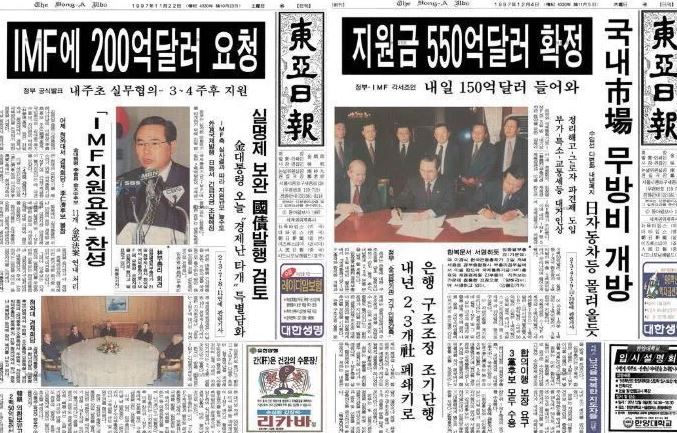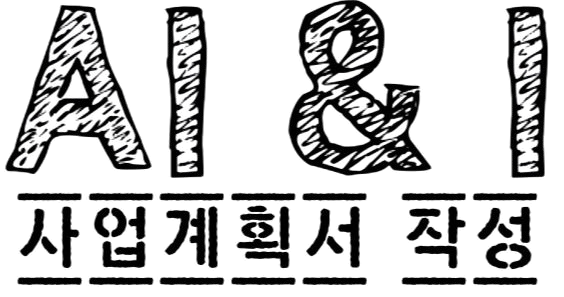On November 20, 1997, the day before Korea announced it was seeking assistance from the IMF to prevent a currency crisis, the value of the Korean won dropped by 10% within 30 minutes of the market opening, reaching 1,139 won per dollar. On that day, the daily fluctuation range increased from the previous 2.25% to 10%, hitting the maximum limit as soon as the market opened. Foreign exchange trading was soon halted.
On the morning of November 20, U.S. Treasury Secretary Robert Rubin issued a statement saying, “Korea must quickly take strong and effective actions to strengthen its financial system to overcome the current crisis.” This was essentially a warning to seek help from the IMF without further delay.
Progression
Korea’s crisis began on January 23, 1997, when Hanbo Steel, the 14th largest conglomerate, declared bankruptcy, signaling the first signs of the currency crisis. Throughout that year, major conglomerates like Sammi, Jinro, Daenong, Hanshin Construction, Kia, Ssangbangwool, Haitai, and NewCore went bankrupt. The collapse of over 5,000 Kia suppliers further destabilized the Korean economy. Many other companies also went bankrupt or entered court-managed restructuring.
In October, after an IMF team assessed the Korean economy, they announced that “Korea is experiencing difficulties in the long-term restructuring process but is not in a crisis situation.” However, the U.S. S&P continued to downgrade Korea’s national credit rating. Consequently, the stock market crashed, and the exchange rate soared.
On November 21, 1997, President Kim Young-sam announced the acceptance of IMF bailout conditions, including significant economic reforms, to prevent a national default due to unpaid external debts. On December 3, 1997, the IMF decided to support Korea with a bailout. Vice Prime Minister Lim Chang-ryeol and IMF Managing Director Michel Camdessus signed the agreement at 7:40 PM, placing Korea under IMF management.
On November 24, 1997, as negotiations with the IMF began, the financial markets were in turmoil. That day was referred to as “Korea’s Black Monday,” with the KOSPI index plummeting 7.2% to close at 450.64. Interest rates skyrocketed in the financial markets, and the foreign exchange market was equally unstable. By December 23, the exchange rate soared to 2,000 won per dollar, more than tripling from the 800 won range at the beginning of the year.
Following this, more large corporations and financial institutions went bankrupt or applied for court protection. Notably, the Daewoo Group, which had expanded excessively using leveraged buyouts, accumulated 65 trillion won in debt due to the declining exchange rate. Despite substantial government spending, Daewoo was dismantled after the IMF bailout.
Many people lost their jobs, families broke apart, and some were forced into homelessness.
Massive mergers and acquisitions occurred among banks, and many companies were sold at low prices to foreign firms. Under IMF conditions, a free competition system was introduced to the labor market, resulting in widespread unemployment and the disappearance of the concept of lifetime employment, replaced by the notion of lifetime careers. Salary structures shifted from seniority-based to annual salary systems, and layoffs became more common, leading to a decrease in regular employees and a rise in non-regular workers.
The IMF crisis also saw positive national solidarity efforts, such as the gold collection campaign. Companies shifted from growth-oriented management to profit-oriented management, enhancing soundness and competitiveness.
After three years, on December 4, 2000, the government officially announced that Korea had fully repaid its IMF loans and was free from the IMF crisis.
Causes of the Crisis
“It’s important to recognize that Koreans believe they caused their own currency crisis,” reported KBS on December 4, 2008, based on internal U.S. government documents. The U.S. State Department’s Bureau of Intelligence and Research had closely monitored Korea’s economic trends since early 1997, including the Hanbo scandal. The U.S. Embassy in Seoul sent daily reports titled “IMF Daily” to Washington starting from December 1997, when Korea entered the IMF management system. These reports stated that “the top priority for the U.S. is to ensure Korea fully complies with its obligations to the IMF and the U.S.”
The Asian currency crisis began in Thailand, where the baht, despite a large current account deficit, maintained a value effectively pegged to the U.S. dollar. Hedge funds targeted the baht, expecting a devaluation, and succeeded in causing a significant drop in its value, similar to what George Soros’s hedge fund did to the British pound. This crisis spread from Thailand to Malaysia, Indonesia, the Philippines, Singapore, Taiwan, Hong Kong, and South Korea. Malaysian Prime Minister Mahathir Mohamad blamed hedge fund manager George Soros for the Southeast Asian currency crisis.
Some believe that Korea’s currency crisis was also influenced by hedge fund activities, as they targeted the entire Asian region. The crisis expanded as the capital flow in and out of the country exceeded manageable levels, exacerbated by hedge fund involvement. The fundamental cause was the opening of previously closed capital markets in Asian countries, allowing large capital inflows relative to their economies.
Former Finance Minister Lee Kyung-sik wrote in his book “The Occurrence, Overcoming, and Aftermath of Korea’s Currency Crisis” that “starting in late October 1997, foreign capital began withdrawing short-term funds due to Korea’s dangerous foreign debt structure, where borrowing and management were mismatched.” In 1997, foreign capital withdrew about $30 billion in short-term funds, which Korean financial institutions could not repay.
Moreover, after September 1997, the Korean government began defending the won to maintain its value despite its decline, rapidly depleting foreign exchange reserves. The government aimed to protect the exchange rate to maintain per capita income at $10,000. This objective made Korea a target for speculative attacks, especially with impending foreign debt maturities.
Like a profitable but heavily indebted company facing default upon a sudden debt call, Korea’s currency crisis was primarily due to excessive debt.
By 1996, 24 investment firms had converted to comprehensive financial companies, eventually reaching 30 and starting overseas operations. Their funding mainly came from foreign short-term debt, which they used to finance corporate promissory notes. When over-leveraged companies went bankrupt, these financial firms were affected. The collapse of Hanbo and Kia, which defaulted on 12 trillion won, accelerated the crisis.
Banks and financial institutions provided massive loans not just by autonomous decisions but also due to the prevalent collusion between politics and business. In his book “The Crisis of Global Economy and America,” former U.S. Treasury Secretary Robert Rubin wrote, “One problematic practice in Korean finance was ‘government-directed finance,’ where government officials could direct banks on whom to lend. Consequently, banks lacked discipline, companies receiving favorable loans were protected from failure, and financial oversight was almost nonexistent.”
Indeed, there was excessive preferential financial lending to politically connected companies in Korea. On June 29, 1998, five banks (Daedong, Dongnam, Donghwa, Gyeonggi, Chungcheong) were shut down and merged into other banks (Kookmin, Housing & Commercial, Shinhan, Hanmi, Hana). These banks and their corporate clients faced bankruptcy.
The real problem began after negotiations with the IMF concluded. To meet the IMF’s recommendation of an 8% BIS ratio, banks could not consider new loans, leading to a decline in profitability and soaring interest rates. Although borrowing IMF funds necessitated it, the government maintained high-interest rates exceeding 20%, contrary to the low-interest policies typically used to stimulate economies during recessions. As a result, even healthy companies faced financial difficulties and were acquired by foreign capital. The response of cutting interest rates during the 2008 financial crisis contrasts with Korea’s policy at the time, which was not standard.
Most countries increased liquidity and lowered interest rates to counter financial crises, but Korea did the opposite. The private loan market closed, and collateralized real estate and distressed companies flooded the market but failed to sell, increasing the prey for foreign capital. The Korean government allowed JP Morgan, Merrill Lynch, and Morgan Stanley to acquire non-performing loans through the Asset Management Corporation. Foreign investors bought Korean assets at a fraction of their value due to the high dollar value and devalued Korean assets.
Overcoming the Crisis and Its Aftermath
Despite everything, Korea only experienced negative economic growth in 1998 and recovered in a typical V-shape within three years, emerging from IMF control by December 4, 2000.
The timely emergence of IT as a new growth engine and government policies also played a role in economic recovery. The government acknowledged that the fundamental issue of the currency crisis was the policy of nurturing large conglomerates and their market dominance, leading to the establishment of the Fair Trade Commission and the Financial Supervisory Commission to initiate chaebol reforms. Simultaneously, policies to foster venture and small and medium-sized enterprises and activate the KOSDAQ market led to numerous venture startups.
Korea needed restructuring to advance its economy. Many companies dependent on government-directed finance support disappeared. Before the crisis, Korean companies focused on market share and growth rates. Post-crisis, they shifted from growth-oriented to profit-oriented management, realizing the importance of sound financial structures and technological competitiveness.
However, there were costs for these policies. The push for venture companies and the influx of floating capital created an IT bubble. Policies to boost construction and consumer spending via credit cards led to a surge in bad credit and the 2003 credit card crisis, causing the bubble to burst.
The aftermath continued with sluggish domestic demand from 2003 to 2005, despite the government’s low-interest policy. The Bank of Korea cut the base rate eight times, lowering it to a record low of 3.25% by the end of 2004. However, continuous dollar inflows inflated market liquidity.
Individuals began borrowing, inflating the bubble. Household loans, which were around 192 trillion won by 1999, increased by nearly 30% annually, reaching 648 trillion won by 2008. This capital flooded into real estate, inflating the bubble despite the administration’s various real estate regulations, coining the term “bubble seven.”


